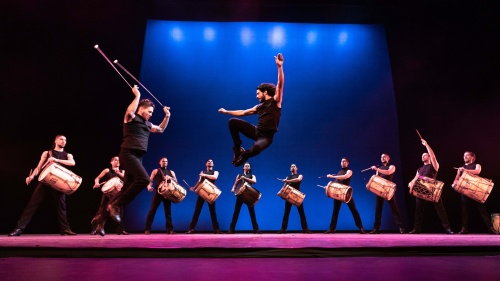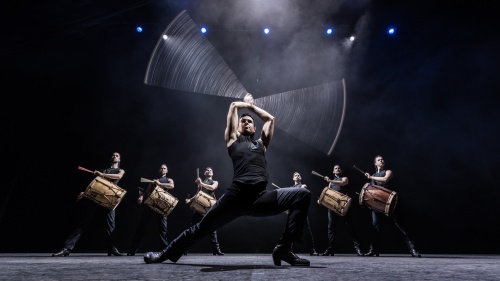|
 |
|
|
 |
 |
Che Malambo, the all-male Argentine dance troupe, stomped, grunted and glowered their way through their 75-minute testosterone-injected performance at The Joyce (February 11-16. I went on opening night). The twelve remarkable men showcased quite a feat of prowess, precision, passion and power. They were a wonder, from the tips of their heads (some with rather interesting hair styles) to the bottoms of their astounding feet, which moved past the speed of light. In addition to dancing, they played drums, whirled boleadoras, played guitar and sang. The Argentine-based company was created about a dozen years ago by French choreographer and former ballet dancer Gilles Brinas, who is its Artistic Director and Choreographer. He found the most gifted Malambo dancers in Argentina for his company, and the choreography was developed with their collaboration. The rhythm and music composition are inspired by traditional Argentine folk music. Malambo, which dates back to the 17th century, is a competitive dance of agility, strength and dexterity of the Argentine “gaucho,” or South American cowboy. It is performed only by men, the music has no lyrics, and it is based entirely on fast-paced footwork inspired by the rhythm of galloping horses on the back of which gauchos spend a lot of their lives riding through the Pampas, or plains. The foot movements are also reminiscent of high-kicking Irish dance, the flicks and twists of Argentine tango, the rat-a-tat of American tap and the zapateados (fancy footwork) of Spanish flamenco. Whereas flamenco involves preening, uplifted torso and ever-changing graceful arms, wrists and fingers, for the most part the arms of the men of Malambo were held in a static U-shape, with the feet doing the talking. Preening took the form of posturing and puffed-out chests, whether performing as a razor-sharp ensemble or as they got into each other’s faces in competitive duets and personal solos. The show opened with a solo drummer striking a bombo, a two-sided Argentine drum traditionally carved out of a hollowed tree trunk and covered with animal skin. The bombo hangs from the drummer by a strap and can be hit on one or both sides or on the metal rim with a mallet or stick. It makes a deep percussive sound. Then just imagine the reverberation throughout the theater when twelve men played it in perfect unison or call and response. There was a quieter but no less skilled section where one of the multi-talented dancers took up a guitar to sing a few songs. Others joined in with guitars and sang. All the performers were now shoeless and executed flat-footed stomps, heel work and balanced on toes. One constant was this crazy movement, where the outside of the foot is banged down flush to the ground, a very good way to sprain your ankle (relating). One of the highlights was the swirling boleadores (bolas), lassos with stones on the end. They sometimes used one and sometimes two, like a childhood game of Double Dutch, with wrists crossing over each other. The effect was a majestic circular arc or fan of light, with the accompanying boom of the stone hitting the ground. They did more drumming, more boleadores, more of everything, including defiant looks turning into plastered-on smiles for the audience. Unfortunately, more was too much as many in the audience turned restless from the repetition. While Malambo’s virtuosity was exceptional and flawless, there’s almost too much of a good thing one can take.
 Photo © & courtesy of Frank Wiesen |
|
 Photo © & courtesy of Frank Wiesen |
|
 Photo © & courtesy of Diane Smithers |
|
|
|




